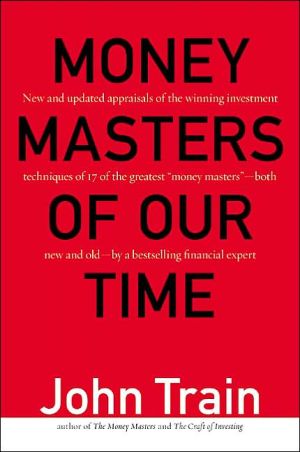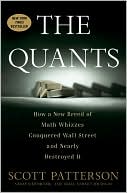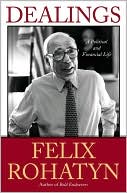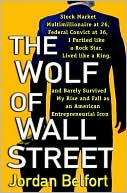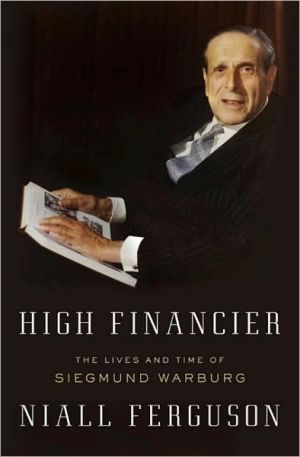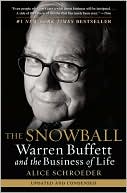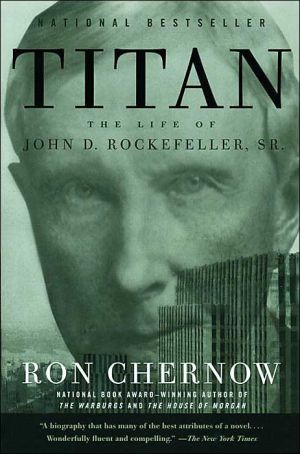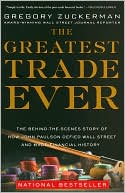Money Masters of Our Time
An expert reviews the experts - new and updated appraisals of the winning investment strategies of the greatest financial wizards.\ Money Masters of Our Time is a reappraisal and revision of those money masters who have stood the test of time plus a look at new money masters. Train emphasises the parts of their various business careers that illuminate their investment techniques focusing on notable individuals whose decisions to buy and sell have actually made money grow. How do they reason?...
Search in google:
Where do the richest portfolio investors in the world get their information? How do they figure out where to invest? How much do they depend on fact and how much on psychology? What stocks are they buying now and why? Financial authority and bestselling author John Train examines the widely varying approaches of 17 master investors, including Peter Lynch, Jim Rogers, George Soros, Michael Steinhart, and Warren Buffett, and offers a fascinating look into how they became the most successful investors of the century. Focusing on the principal schools of investing—growth, value, technology, emerging markets, specialty companies, micro-caps, turnarounds, top down, bottom up, and others—Money Masters of Our Time shows how these men's careers illustrate the most effective investment strategies for long-term prosperity and how they can work for ordinary investors as well. New York Times Book Review - Paul E. Erdman The best book in the investment field that I have read in years.
Chapter One\ T. Rowe Price\ Mr. Growth Stock\ \ \ \ The great bull surge of the 1990s was a perfect T. Rowe Price market. Everybody got rich, but some people got really rich: those who spotted the hot new growth stocks--Microsoft, Intel, Cisco, AOL, and the rest--and rode them to glory. They often made ten times or so on their money-sometimes a hundred times. The investors who failed to tie on to this prodigious opportunity mostly held off because they couldn't properly evaluate the companies and felt they ought to understand anything on which they risked their capital.\ So how could one have made the decision to ride this wave on the basis of the imperfect understanding that most of us bring to high technology? This chapter describes the technique.\ The one key thing you did have to determine was that computer software, the Internet, biotechnology, telecom, and the rest of the high-technology landscape were real and were exploding. Changing the world, in fact. In other words, that here was a great growth opportunity. Not a hard truth to determine! But the difficult part, how to participate, is what the Price technique can tell you. So here goes.\ Like Benjamin Graham, Price, who died in 1983, gave his name to an entire theory of investment. The "T. Rowe Price approach" was once heard on Wall Street almost as often as "a real Ben Graham situation," the prevailing orthodoxy before Price arrived. Price's growth-oriented thinking gradually pushed aside the "value" style systematized by Graham. Indeed, Price may have popularized the term "growth stock." Price created a large pool of capital: Already substantial whilehe still headed it, the company he founded, T. Rowe Price Associates, Inc., in Baltimore, eventually became one of the largest in the country but branched out from its founder's ideas. What follows describes Price's own philosophy, developed during the years when he actually ran his firm.\ His thesis, briefly, was that the investor's best hope of doing well is by seeking the "fertile fields for growth" and then holding those stocks for long periods of time. He defined a growth company as one which shows "long-term growth of earnings, reaching a new high level per share at the peak of each succeeding major business cycle and which gives indications of reaching new high earnings at the peak of future business cycles." (It may, however, have declining earnings within a business cycle.) Coca-Cola (which became by far Warren Buffett's largest holding) was for a very long time exactly such a company, as were Merck, Wal-Mart, and Texas Instruments.\ Price held that since industries and corporations both have life cycles, the most profitable and least risky time to own a share is during the early stages of growth. After a company reaches maturity, the investor's opportunity diminishes and his risk increases. Successfully working out and applying this approach made him one of the most famous investment practitioners of his day.\ A portly man with sad eyes and a dark mustache surmounting a knowing, tired, and somewhat grim smile, Price came from Glyndon, Maryland, then a summer resort for people from Baltimore. His father was a country doctor.\ Investing was his life. Like most of the greatest investors--or artists or professionals of any sort--Rowe Price lost himself in the task; his first interest was always in superior performance, not in making a killing for himself. He was thus a good professional: The client came first. "If we do well for the client, we'll be taken care of," he liked to say. He craved immortality in the record books. To help shape his own monument, he kept a close eye on what the press said about him, and later, long after retiring from his firm, started writing articles on his investment ideas to create a new performance record.\ In his eighties, Price still got up at 5 A.M. He was exceedingly disciplined and organized, with an agenda for each day, always executing the items in the order listed and never taking up unlisted ones. Similarly, when he bought a stock at 20, he also established that he would sell some at, say, 40 and did even if things had changed for the good. If he had determined to buy more stock at 13, he would even if the news from the company was discouraging.\ An associate recalls him as being "amazingly able, irascible, and egotistical." He was "Mr. Price" to almost everyone; he wouldn't be aboard the ship at all unless he was the captain. He was able to say, "I make a lot of mistakes . . . I'm not very bright," but all the same, everybody who worked with him always had to do exactly as he specified. Since he hated to delegate responsibility, he would have made a poor industrial manager.\ To be a great investor, one must be a contrarian, a loner. But it's virtually impossible for loners to create a self-sufficient organization. Typically, the strong-willed loner has weak followers. He thus must either sell his company to outsiders to realize a capital value for his efforts (which leaves his clients prey to the acquisitor) or else, with great trepidation, sell it to his own followers, as did Price, who was openly concerned that his followers were not fit to succeed him. The best hope for the organization is to have a talented successor still in his thirties when the sixty-five-year-old founder is ready to retire. The latter may not be jealous of a much younger man--not his psychological son and rival, but his grandson.\ T. Rowe Price Associates had a relatively small volume of assets under management until late in Price's life. In the early 1950s the firm's portfolios totaled only a few hundred million dollars, and in 1966, when Price was in his late sixties, the firm ran approximately $1.5 billion . . .\ Money Masters of Our Time. Copyright © by John Train. Reprinted by permission of HarperCollins Publishers, Inc. All rights reserved. Available now wherever books are sold.
\ Business WeekProvides as broad a range of investment insights as you're likely to find anywhere.\ \ \ \ \ ForbesThere is a handful of terrific books by terrific writers, most of whom invested money for a living, none is better than John Train.\ \ \ Joe QueenanIt is as lucid and succinct an introduction to investing as any book to be found anywhere; it is also elegantly written and often quite witty.\ — American Spectator\ \ \ \ \ Paul E. ErdmanThe best book in the investment field that I have read in years.\ — New York Times Book Review\ \ \ \ \ Robert ClarkThe best book on money management I've ever read, and quite possibly the best book on the subject ever written . . . The writing is concise, yet engaging and accessible.\ —Worth Magazine\ \
